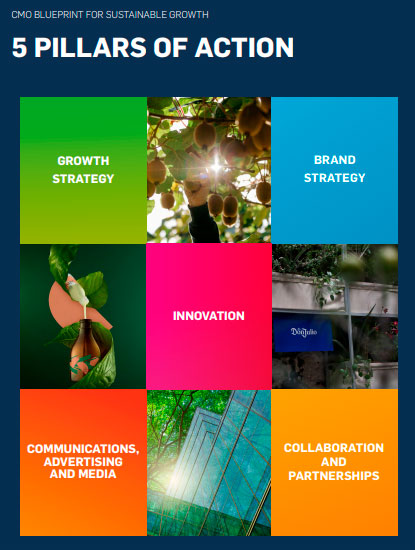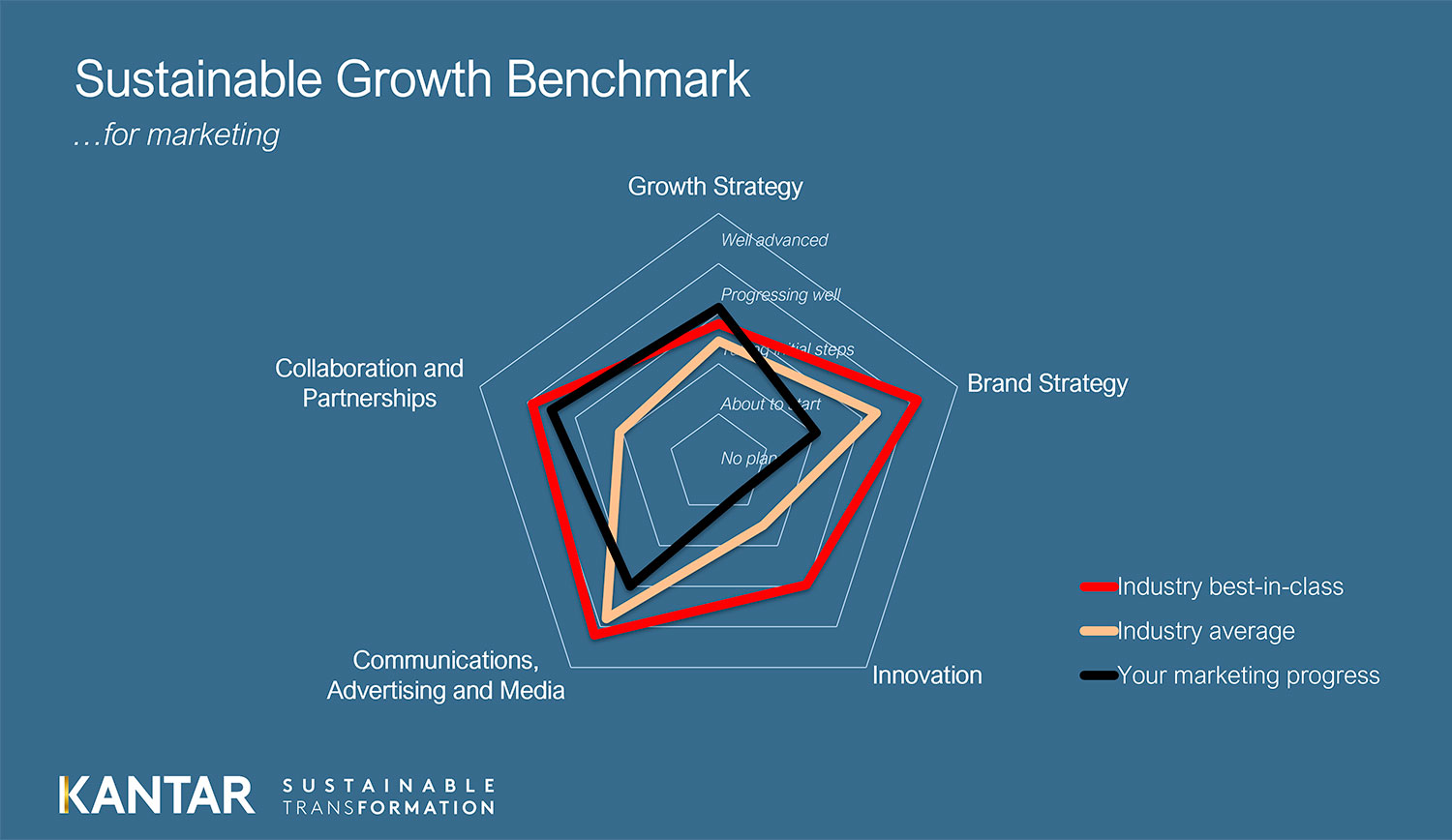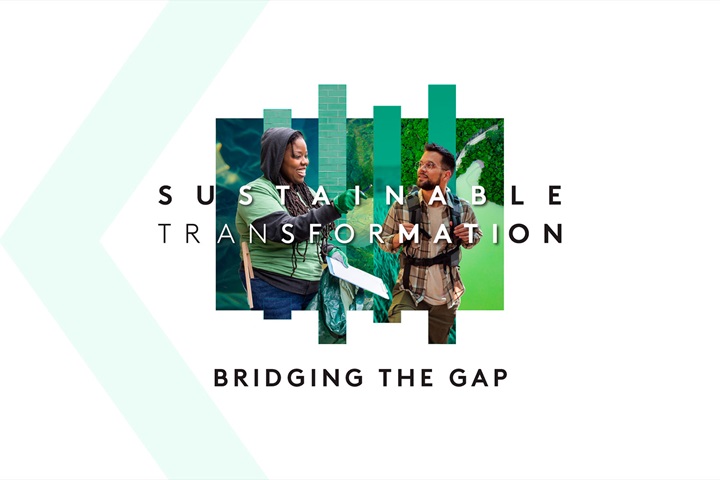It’s one of marketing’s most persistent myths: that sustainability slows growth. That doing what’s good for people and the planet comes at the cost of profit and performance. That marketers must choose between short-term results and long-term responsibility.
But what if that idea is not only outdated, but dangerously limiting?
Enter the CMO Blueprint for Sustainable Growth, an industry transforming initiative by United Nations Global Compact in collaboration with Kantar’s Sustainable Transformation Practice as patrons, playing a shaping role. Part data-driven roadmap, part call to action, it challenges the status quo with the kind of clarity and confidence that leaves little room for doubt. The headline? Sustainability doesn’t just align with growth. It drives it.
In fact, it might be the most underleveraged competitive advantage in modern marketing.
We’re not just talking about reputation points or purpose-led publicity. This is commercial value with hard edges. Kantar’s BrandZ data shows that sustainability now accounts for 45% of a brand’s corporate reputation.
So if marketers are still wondering whether the sustainability agenda matters to consumers, the answer is unequivocally yes. And the consequences of getting it wrong — or worse, doing nothing — are more than reputational. They’re commercial.
The link between sustainability and purchase intent? A striking 0.7 correlation. And on the flip side, the cost of inauthenticity is steep: greenwashing perception is strongly linked to brand rejection, with a 0.9 correlation to consumers dropping brands. (source: Kantar Sustainability Sector Index Study)
And yet, most marketers still feel they’re not set up for success. According to the Sustainable Marketing 2030 study by the World Federation of Advertisers and Kantar, CMOs are committed to change — but often lack the tools, language, and cross-functional power to act on that ambition.
The CMO Blueprint seeks to fill that gap with something refreshingly practical: a five-pillar framework that reimagines growth step by step through the lenses of brand, innovation, communication, media, partnerships, and strategy.

Frameworks are only as powerful as the stories they enable
Take Zespri, the global kiwi fruit brand that doubled its revenue while reducing emissions by 13%. Not because sustainability was a campaign message, but because it was included in performance incentives, KPIs and the brand’s entire growth model.
Or Intrepid Travel, which turned ethical marketing into a strategic advantage, achieving record revenue and customer satisfaction by being unflinchingly transparent — publishing carbon labels on every itinerary, openly reporting progress on diversity goals, and sharing sustainability tools even with competitors. Even when others backed away from social commitments.
And then there’s Natura, whose concentrated moisturizer didn’t just outperform sales expectations by 100% in three months — it redefined how beauty products can be made and delivered. By designing a waterless formula that consumers mix at home, Natura reduced packaging by 81%, cut transport emissions by 38%, and empowered 689 Amazonian families through a sustainable Brazil nut supply chain. It wasn’t just a product; it was a rethink of the entire system — from sourcing to formulation to distribution — all designed to regenerate communities and the planet. And yes, it also happens to leave your skin noticeably softer.
These aren’t niche outliers. They’re proof that belong in the boardroom as much as on the brief for doing business in a sustainable world.
Even in legacy sectors, change is happening. Diageo turned tequila into a story about water sustainability. L’Oréal is cutting emissions in digital media without compromising effectiveness. Asahi’s Żubr campaign replaced its brand icon with endangered species — and gained market share in the process. Mastercard used its data platform to help 73,000+ Ukrainian refugees find new homes and jobs in Poland — then won a Cannes Lions Grand Prix for doing what marketing should always do: solve society's problems with creativity and care.
What unites these examples isn’t just their success. It’s their refusal to treat sustainability as an extra. These are brands that didn’t just tell a different story. They became it.
This is the essence of the Blueprint’s provocation: that marketing must move from storytelling to ‘storydoing’. From describing purpose to operationalizing it. From talking about change to delivering it - at speed, at scale, and with commercial impact.
The question now is not if marketing should lead on sustainability. It’s how fast it can switch gear.
Because here's the truth: brands that wait to act risk becoming irrelevant. Consumers aren’t waiting. Regulators aren’t waiting. Investors aren’t waiting. And the climate certainly isn’t.
What the CMO Blueprint offers is not a silver bullet, but a compass. One that helps marketers navigate the complexity with confidence and make data-driven decisions — and maybe even rediscover the reason they fell in love with marketing in the first place. After all, what could be more powerful than shaping the future of the world?
Curious to see where your brand stands?
A key component of the CMO Blueprint for Sustainable Growth is a measurement system that can help CMOs identify gaps within their own practices while also benchmarking against peers.

This benchmark provides industry-wide insights, revealing barriers, enablers and opportunities across sectors and geographies. By participating, you contribute to shaping a marketing landscape that drives positive impact while gaining actionable insights to refine your strategies.
Let’s redefine what growth looks like, together.




